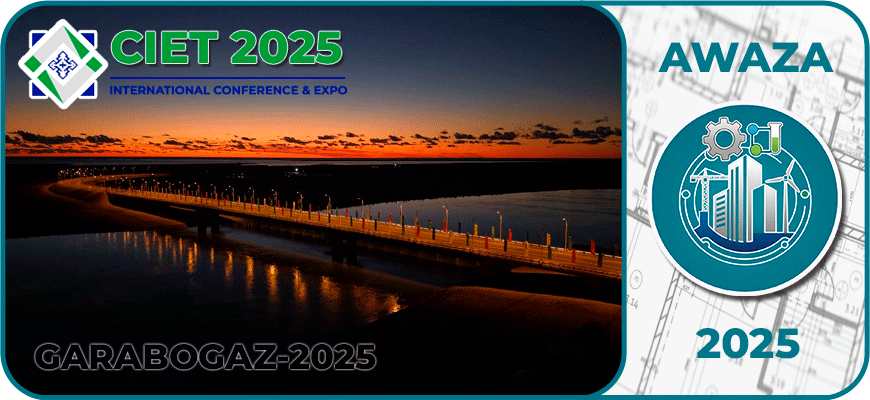




On November 2, 2025, the Esteemed President of Turkmenistan, Serdar Berdimuhamedov, paid a working visit to the Balkan Region. As part of the trip, foundation-laying and inauguration ceremonies of major industrial and transport facilities of strategic importance for the country’s economic development were held.
The timing of these events — on the eve of the Day of Construction and Industry Workers — adds special significance to the occasion. These achievements vividly demonstrate the successful continuation of the noble initiatives of Hero Arkadag and their effective realization under the leadership of Arkadagly Hero Serdar, during whose era the construction of roads and bridges — a matter of national pride — is being dynamically pursued.
Under the guidance of the President, large-scale efforts are being carried out throughout Turkmenistan to comprehensively develop the regions and expand industrial and transport infrastructure. These successes are clear evidence of the effective implementation of the National Program for the Socio-Economic Development of Turkmenistan for 2022–2052 and the Presidential Program for the Socio-Economic Development of Turkmenistan for 2022–2028.

Within the framework of these programs, extensive projects are being realized to increase production based on local raw materials, establish export-oriented enterprises, and modernize construction and transport infrastructure. One such project is the newly built automobile bridge across the Garabogazköl, the opening of which was attended by Arkadagly Hero Serdar. Located along the Turkmenbashy – Garabogaz – Kazakhstan border international highway, the bridge has a total length of 354 meters and a width of 21 meters, consisting of two carriageways and four traffic lanes.
This impressive engineering facility contributes not only to the development of the national transport and logistics system but also to the strengthening of international connectivity. The new bridge and highway form a vital part of a transit transport corridor linking the western regions of Turkmenistan with European countries via Kazakhstan and with South Asian nations via the Islamic Republic of Iran.
The new highway will serve as a junction linking the North–South and East–West transport corridors of Eurasia, forming a reliable automotive network of Central Asia connecting Iran, Turkmenistan, and Kazakhstan. The route will expand logistics opportunities for Russia, Kazakhstan, Turkmenistan, Iran, and India, providing a shorter and more economically efficient connection to European markets.
The project’s implementation will promote sustainable growth of the regional and continental logistics system, increase trade turnover, passenger traffic, and export-import potential.
Following the inauguration, teachers and students of the Turkmen State Architecture and Construction Institute conducted field training sessions on the newly opened automobile bridge across the Garabogazköl.
During the session, students examined the bridge’s structural design, engineering features, load-bearing and stability systems, the multilayer composition of the road surface, and the types of modern materials used. The instructors explained the use of concrete, reinforcement, asphalt concrete, geotextiles, and protective structures in bridge construction.
Students also visited the construction site of the Turkmenbashy – Garabogaz – Kazakhstan border highway. The highway consists of four lanes, with a roadbed width of 27.5 meters, each carriageway being 7.5 meters wide, and each lane — 3.75 meters. The carriageways are separated by reinforced concrete barriers, and both sides are equipped with safety guardrails.
The 207-kilometer section from Turkmenbashy to Garabogaz begins in Turkmenbashy, passes across the new bridge, extends to the roundabout near the Garabogazkarbamid Plant, and continues up to the state border with Kazakhstan.
Students also studied the road pavement construction technology, which includes:
Designed to handle 580 vehicles per hour and 14,000 vehicles per day, the highway includes 8 bus stops, parking areas, fuel stations, social service facilities, and is equipped with modern video surveillance systems.
The instructors highlighted engineering calculations of pavement layers, asphalt mixture compositions, and international standards for road safety and durability.
This educational practice became a vivid example of the integration of science, education, and production. The Turkmen State Architecture and Construction Institute actively implements research outcomes in modern design, production, and construction processes. Students’ participation in such major engineering projects strengthens their applied skills, enhances their understanding of real-world infrastructure development, and fosters innovative engineering thinking.
This synergy reinforces cooperation between the Institute and industrial enterprises, facilitating the introduction of advanced technologies, new building materials, and digital solutions, thus contributing to the new stage of the country’s industrial and transport progress.
These noble initiatives inspire the younger generation to serve the Motherland, work creatively, and reach new heights in science, education, and engineering practice.
The faculty staff and students of the Turkmen State Architecture and Construction Institute express their deep gratitude to Hero Arkadag and Arkadagly Hero Serdar for creating such opportunities for professional growth and scientific advancement, and wish them strong health, long life, and great success in their noble and nationally significant endeavors for the prosperity of Turkmenistan and humanity.
Yolly Myradov,
Head of the Department of “Automobile Road Construction”
at the Turkmen State Architecture and Construction Institute,
Candidate of Technical Sciences
